Japan is now all the rage, with large numbers of tourists from all over the world flocking to the shores of this island nation to soak up the sun in the Land of the Rising Sun. The recent surge in popularity may be the result of pent-up demand, as Japan remains closed to independent foreign visitors until October 2022, by which time most countries have completely abandoned this pandemic-induced restrictions. In 10, the World Economic Forum Travel and Tourism Development Index ranked Japan as the world’s number one tourist destination, topping its list of 2021 destinations for the first time, while Japan saw almost zero tourists during the year. Boundary. No wonder everyone and their uncles set their sights on lively Tokyo, food-centric Osaka, arts-filled Kyoto, and seaside Okinawa.
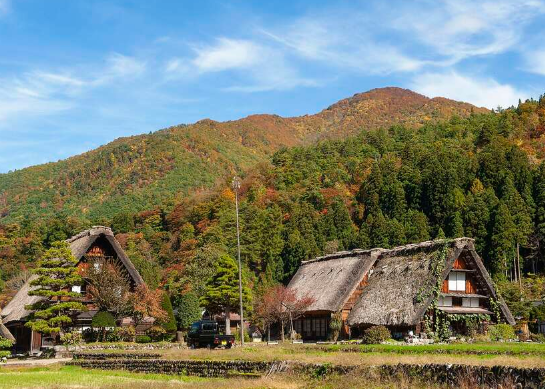
But if you’re looking to immerse yourself in Japanese culture without getting lost in a sea of roaming tourists, Gifu and Nagano – two of the nine prefectures spread across the central region of the Chubu Mountains – are ideal landing locations. Home to picturesque cities such as Nagano City, Takayama, Hida and Shirakawa-go, there is no shortage of opportunities to see and learn about the region’s rich history. You’ll feel like you’ve stepped back in time as you stroll through the village, which is home to well-preserved traditional Japanese architecture, strange bridges that span winding rivers, and softly glowing lights that illuminate the streets every night.
Here’s everything you need to know when planning your next trip to Japan’s year-round dream resorts of Gifu and Nagano.
How to Get to Gifu and Nagano Prefectures and Their Surroundings
From Tokyo, you need to take the shinkansen (bullet train) to the central region of Central Japan. Buying the Japan Rail Pass, a multi-purpose ticket that allows you to travel on trains across the country over a period of 7,14 or 21 days, is definitely the easiest way to keep your entire journey on track. If you plan to visit only a few selected destinations, a single shinkansen ticket is a cheaper option, albeit with more restrictions.
You’ll know you’ve entered the mountainside as the scenery on the train changes from bustling city life to endless trees and fields. Since this area is more rural and less frequented by foreigners, it is a good idea to learn some Japanese keywords and carry a translation device or app with you.
Throughout the prefecture, taxis are a convenient way to get to and from nearby cities and suburbs, while the metro is the main mode of transportation in the region’s larger cities. As a first-time visitor who doesn’t speak the language, I was nervous about riding the subway system alone, but Apple Maps helped me every step of the way, from exactly which platform to use to when each train arrived.
Explore the Ancient Homes of Shirakawa-Go
Isolated for centuries from the rest of Japan by Shirakawa-go and the neighbouring historic village of Gokayama, Shirakawa-go and the neighbouring historic village of Gokayama have been officially listed as a UNESCO World Heritage Site since 1995. While you can visit the area in any season, winter brings some chilly weather. This is the annual Winter Festival of Lights. Watching the historic houses sparkle in the snowfall is an absolutely magical experience.
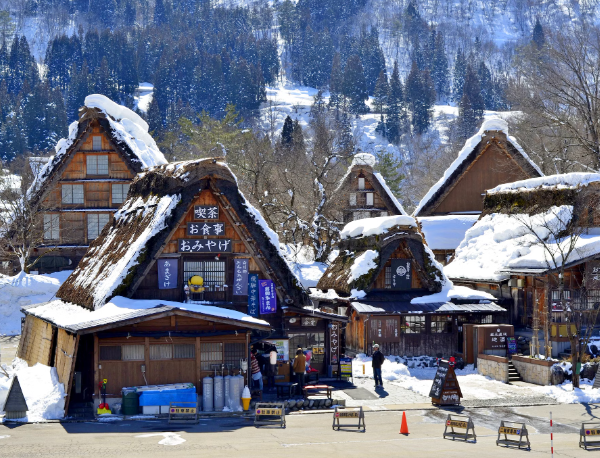
Whatever the season, start your day at the Ogi Town Observatory. From your position high above Shirakawa-go, keep an eye on the steep triangular roof on top of the gassho-style house that unfolds below you. The large thatched roof is built at a 60-degree angle so that snow can easily slide off its surface without putting pressure on the foundation below. You’ll also notice that all houses face the same direction, allowing wind and sunlight to effectively dry their unique roofs, and the Gokayama Forest Owners Cooperative, which is meticulously resurfaced every few decades.
Later, cross the Tokuai Bridge over the Shangcheon River and explore the traditional houses, food vendors, and shops of Shirakawa-go Ogicho Village up close. Must-see attractions include the Wada House, souvenir and souvenir shops Sato, Kodaijin and Kobikiya Kakinokiten, and restaurants such as Irori, Chubee and Shiraogi.
Book Accommodation in a Traditional Townhouse
After the history lesson, head to Takayama to visit the century-old Takayama Yagami Townhouse. As you peruse the manicured garden, relax on handmade Hida furniture, and curl up on tatami mats every night, you will feel like you have stepped into another era. Rest assured, though, modern amenities like the Nespresso coffee machine and Bluetooth speakers keep you firmly in the material comforts of the 21st century.
Iori Takayama also partners with local restaurants and small businesses around the city to provide in-room dining experiences delivered to your room. Don’t be shy about dietary restrictions – the reception team is keen to accommodate specific requests and accommodation.
After dinner, stroll through the well-preserved area and admire the area’s well-preserved original historical buildings. Take a soak in your own open-air tub in the evening and relax in a secluded and tranquil way to relax all the worries of travel.
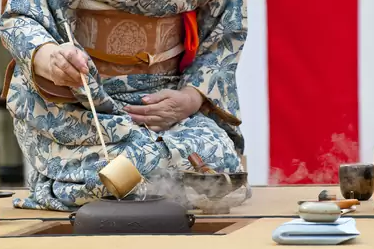
Find Your Zen with a Hands-On Herbal Spa Experience
No Yagami stay is complete without building your healthy muscles in an advanced herb sauna experience. First, you will ride a rented e-bike into the Hida Forest to collect many cuttings of aromatic black wool trees, which are said to have medicinal properties. You will then return indoors to participate in the herbal tea ceremony. As you rest in the common room, your guide will guide you through the various locally grown herbs, detailing their benefits, while adding specific selections to your mug to create a custom blend designed to meet your specific health needs.
Next is the sauna for an additional detoxification. small rooms are heated by wood-fired stoves; Pouring water with the herbs you have previously collected into the coal creates a fragrant and extremely soothing mist. Everything is in a hard day’s work.
Indulge in the Best Beef in Japan
Apologies to vegetarians in advance, but if you are in Gifu, you really shouldn’t leave without tasting the region’s world-famous beef.
The variety of wagyu, Hida beef (or Hida beef) comes from specially bred Japanese black cattle that have lived and grazing in Gifu Prefecture for at least 14 months. To earn this designation, each piece of meat must pass rigorous tests that evaluate marbling, color, texture, hardness, luster, and smell. Hida is so famous that it has won several awards (including the coveted Prime Minister’s Award) at the Wagyu Olympics at the prestigious National Wagyu Ability Conference. Needless to say, this is no ordinary ground chuck.
Enjoy meat cuisine at Hida-gyu Grill Bakuro in Gifu City, a cozy venue offering a variety of Hida beef dishes, from multi-course melt-in-the-mouth Chateaubriand dinners to homemade goulash and even juicy homemade burgers. The concept of an open kitchen is an added bonus as you can watch talented chefs cook a meat menu while you eat.
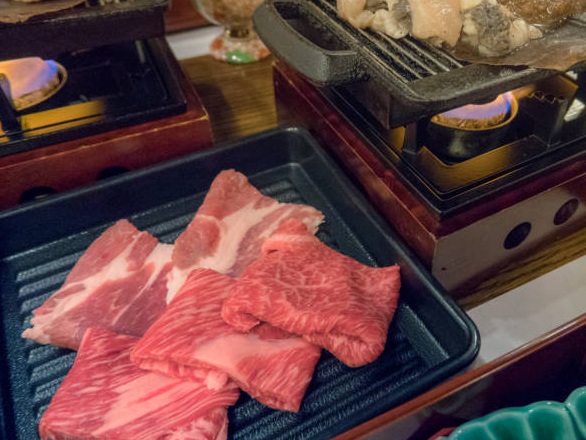
Other excellent Hida beef suppliers include the lovely family-run Yamatak and exquisite Kitchen Hida in Takayama, Senryu combining modern and traditional in Gifu City, and Yakiniku Yoshita (a veritable yakiniku temple) in Mizunami.
Admire the Stars from the Top of the Mountain
If you live in a big city, there’s little chance that light pollution will cause you to see stars regularly. However, the central region is mountainous and beautiful, and you can enjoy the dazzling night sky without obstruction.
In Nagano, Achi Village is a stargazer’s paradise. This charming village was ranked first in a national stargazing event organized by Japan’s Ministry of the Environment in 2006. You’ll definitely want to head to Heavens Sonohara in Fujimitai Kogen, a year-round ski run where you can climb 15,4-foot slopes in about 600 minutes by rope lift. At the top of the mountain, you will enjoy the pitch-black surroundings of one of the most incredible starry sky landscapes in the world.
As you gaze, an expert guide will point out the constellations and explain their origin stories. Each guest is equipped with a smartphone and phone holder so they can take high-resolution photos and videos of the night sky. If it’s too laborious to stretch your neck to look up, bring a blanket so you can hold up your phone, lie down, and marvel at the glittering sky in style.
Jog Through the Scenic Karuizawa
Karuizawa is one of Nagano’s most famous resort towns, known for its excellent ski resorts in winter and many outdoor activities during the warmer months. Originally a resort in 1888, it was designed by a Scottish-Canadian developer to build a European-style resort in the mountains of Japan. The town is famous for hosting both the Summer and Winter Olympic Games (equestrian events in 1964 and curling in 1998) and attracts a large number of international visitors, many of whom are celebrities, looking to enjoy the fresh mountain air while on vacation. Even John Lennon and Yoko Ono are big fans, the latter comparing Karuizawa to “Hampton, except it’s in the mountains.”
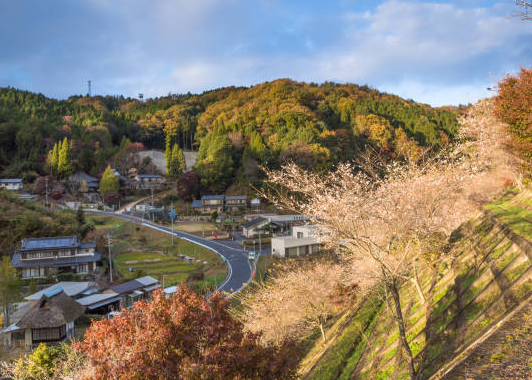
Partner with Karuizawa Ranch on a horseback riding adventure through the idyllic countryside outside Karuizawa and see what the fuss is all about. Depending on your experience, you can choose from a number of different guided sessions that allow you to walk, trot, or jog for a specified amount of time. After check-in, your guide will lead you out of the paddock and into the forest where you can enjoy your ride among towering Japanese sequoia trees. First-time users are very welcome, and boots, gloves, helmets, and even jackets are provided at the facility, so no additional gear is required.
Look for Strawberries in Saku
While Japan is world-famous for its wide variety of one-of-a-kind foods (we see you, sake-flavored KitKat chocolate), one food that is often overlooked is the humble strawberry. But after taking a bite of this sweet and juicy Japanese specialty, there are few other berries that can be compared. As one of Japan’s most popular fruits, strawberries are sure to appear in any market you pass by, but the best way to experience this all-around berry is to roll up your sleeves and pick some strawberries yourself during peak growing season. From January to March.
Inoue Toraoi Farm is located near Sakusakuhei Station and opens fields and greenhouses to strawberry pickers every year. The fruits are stored according to quality, and if you want to get a premium pass, you will be able to taste the best fruits, including a selection of rare white strawberries that are prickly for the taste buds. The best part? You are highly encouraged to dine in to round off your epic journey across Gifu and Nagano.
